ICELAND – PART 3
After five short hours of sleep we rolled out of bed and got up, ready to take on the glacial lagoon at Jökulsárlón before making the drive back along the south coast to Reykjavik. Our little cabin at the Guesthouse Skálafell had served us well, and if you’re looking for a place to stay within striking distance of the lagoon (half way between the lagoon and the town of Hofn), this is a great option. The cabin may not look like much (they have a few cabins on the property as well as rooms in the main house), but it had everything we needed, including a few modern conveniences we weren’t expecting (flat screen television, wifi).
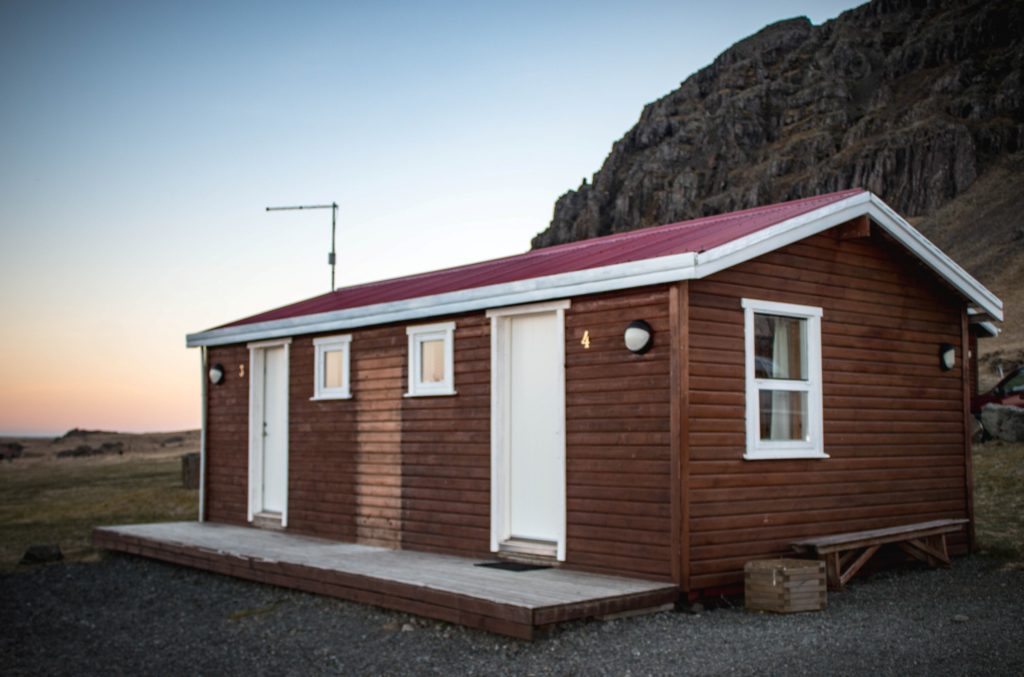 The owner, a very nice man who not only runs the guesthouse but also tends to more than four hundred sheep on the property, made us a bag full of sandwiches, juice, and fruit to take on our journey. We were taking off before the breakfast room was open, so he really went above and beyond.
The owner, a very nice man who not only runs the guesthouse but also tends to more than four hundred sheep on the property, made us a bag full of sandwiches, juice, and fruit to take on our journey. We were taking off before the breakfast room was open, so he really went above and beyond.
Bag of sandwiches in hand, we loaded up our trusty VW Polo and hit the road. The air was crisp, the sun low in the sky, and the ocean had a cool mist over it. About ten minutes into the ride we had an adrenaline rush as a reindeer with massive antlers jumped across the road, just ahead of our car. We’re used to dodging deer in Canada, but swerving to miss reindeer was a new experience that mixed the fear of destroying our little Polo with the urge to yell, “cool, a reindeer!” at the same time.
Twenty minutes after almost running over Rudolph, we made it back to the glacial lagoon. We had visited the night before, but it hadn’t been enough. Its such a brilliant, magnificent place, we knew we had to go back. The lagoon borders Vatnajökull National Park, and is chock full of small icebergs that have gone rogue and busted free from the nearby Breiðamerkurjökull Glacier. The water is a mix of vibrant blues and greens, staying calm save the ripples caused by the slowly migrating ice.
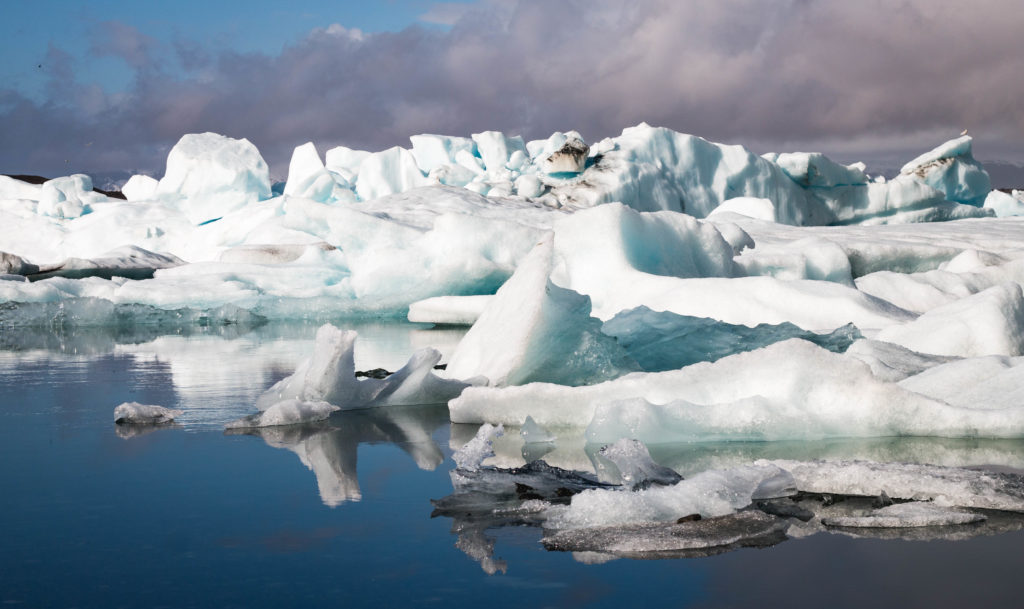 The lagoon is quite large – bigger than we expected. Every direction you turn, there’s something incredibly picturesque to look at. This is a photographer’s paradise; really, it’s anyone’s paradise.
The lagoon is quite large – bigger than we expected. Every direction you turn, there’s something incredibly picturesque to look at. This is a photographer’s paradise; really, it’s anyone’s paradise.
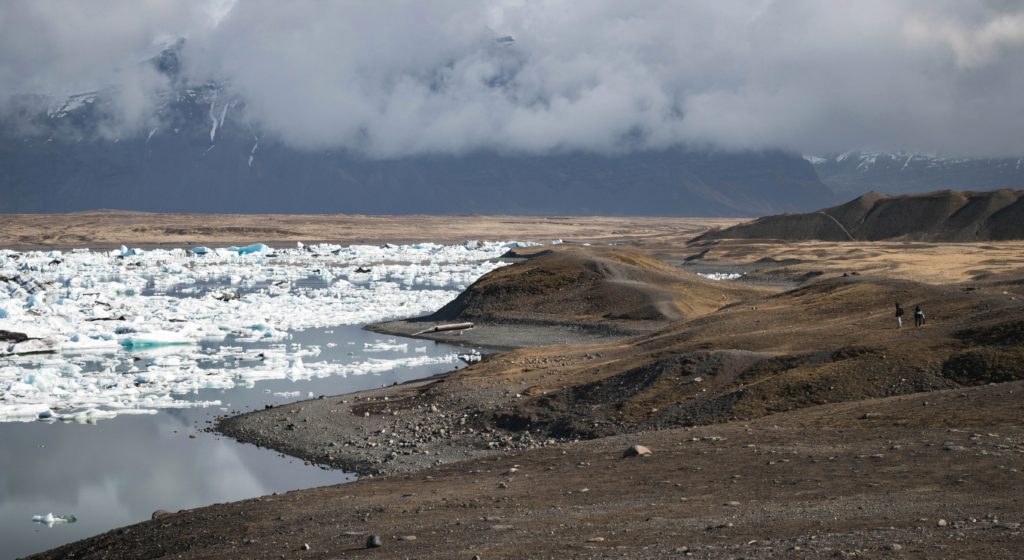 We were there at an interesting time. There was a fog and low cloud cover when we first arrived, making for some pretty dramatic images:
We were there at an interesting time. There was a fog and low cloud cover when we first arrived, making for some pretty dramatic images:
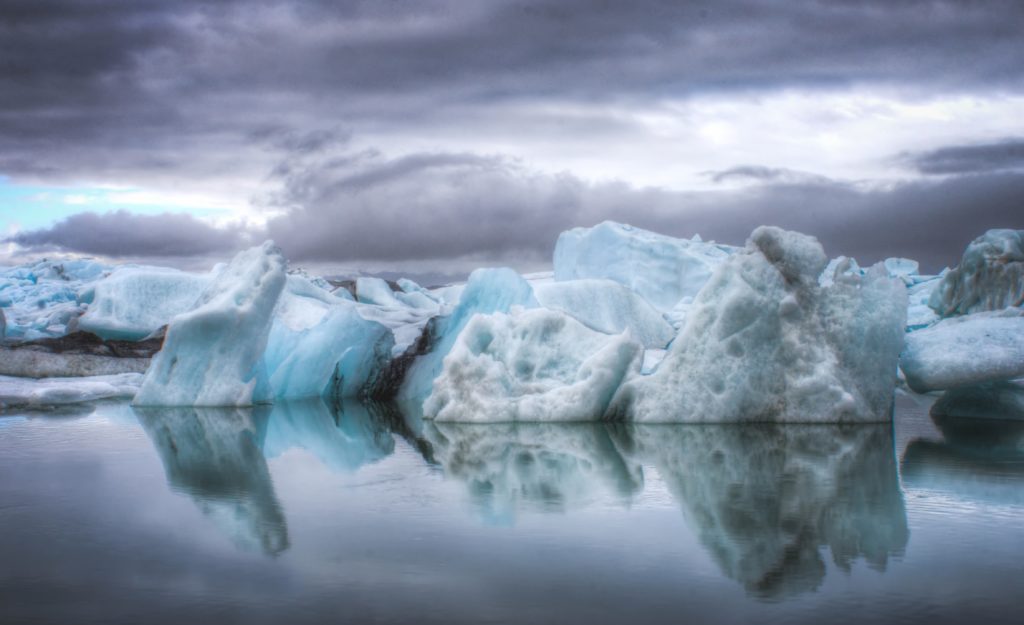 But as the sun rose the skies began to clear and I managed to get lucky and caught the transition, half the lagoon under cloud cover, half under clear blue skies.
But as the sun rose the skies began to clear and I managed to get lucky and caught the transition, half the lagoon under cloud cover, half under clear blue skies.
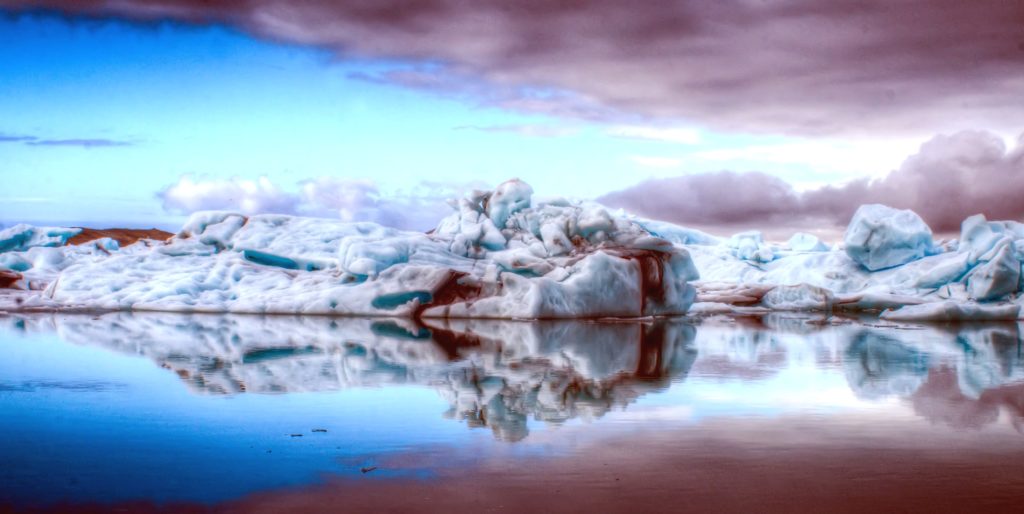 Like the previous night, we didn’t want to leave. We hiked the shore and up into the hills, watched seals hunt for fish, and had a good time taking portraits in an environment made for portrait-taking.
Like the previous night, we didn’t want to leave. We hiked the shore and up into the hills, watched seals hunt for fish, and had a good time taking portraits in an environment made for portrait-taking.
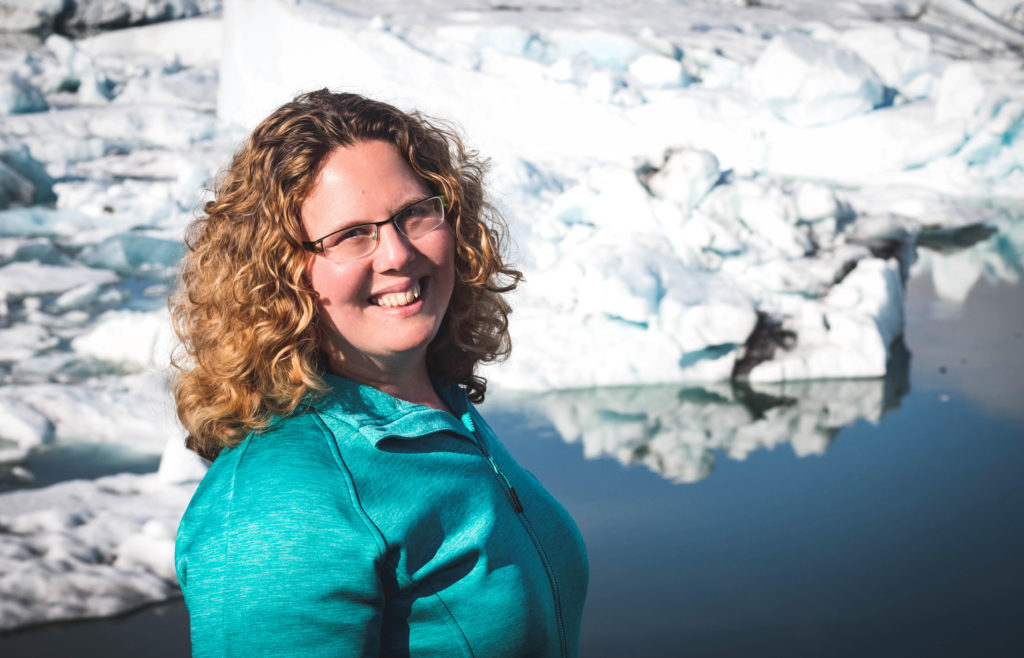 After a couple of hours we packed up and headed out. The glacial lagoon exceeded my expectations; for anyone wondering if it’s worth the trip from Reykjavik, I think it’s an absolute no-brainer if you have the time. It’s one of the most stunning, serene, mesmerizing places I’ve been – and you don’t even have to pay for parking.
After a couple of hours we packed up and headed out. The glacial lagoon exceeded my expectations; for anyone wondering if it’s worth the trip from Reykjavik, I think it’s an absolute no-brainer if you have the time. It’s one of the most stunning, serene, mesmerizing places I’ve been – and you don’t even have to pay for parking.
The Polo chugged south and west, first along the ocean and then a bit more inland. We were hopeful the weather would cooperate and give me another shot at Skogafoss, where it had poured rain the day before, but as we reversed our course from the previous day through Vik, made our way through the hills, and back down to the coast, the skies opened up again and it was made clear that the Icelandic gods of waterfall picture taking were not going to cooperate with us. That’s fine – next time they need a favour from me, I’ll remember this little incident. We did take a quick look at the falls once more, as Skogafoss is worth an extra look, even in a downpour:
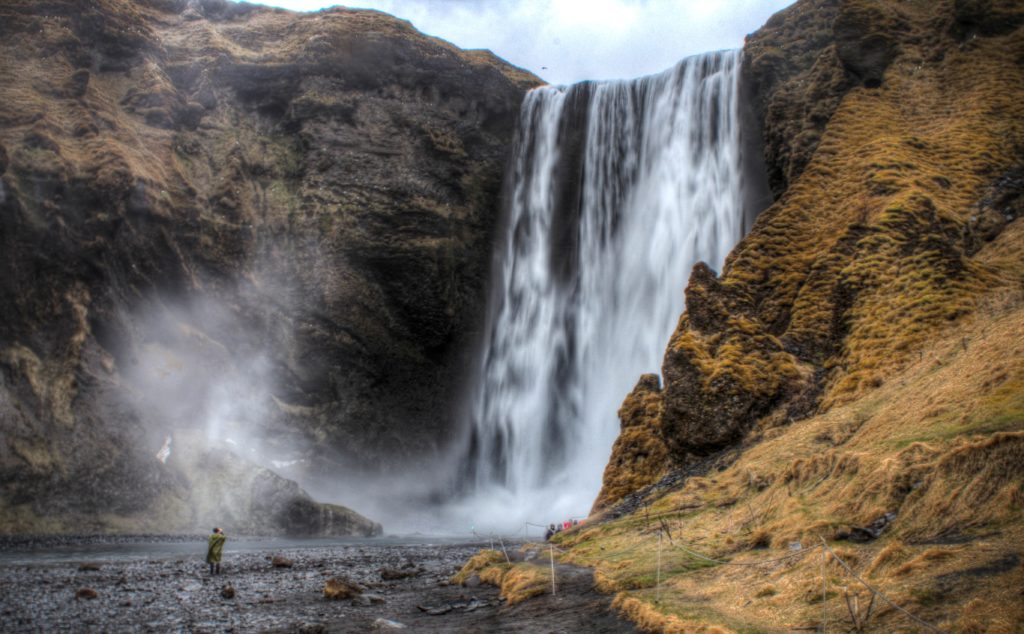
Further east we drove, making our way towards Reykjavik. Past Hella and Selfoss, we came across some traditional buildings built into the side of a hill. We saw this technique – using hillsides as protection against the elements – all over the country. It makes sense; the wind, snow, sand, ash, and rain that pelts Iceland can be pretty nasty. This spot, according to the sign out front, is the home to “Drangshlíð House 2”.
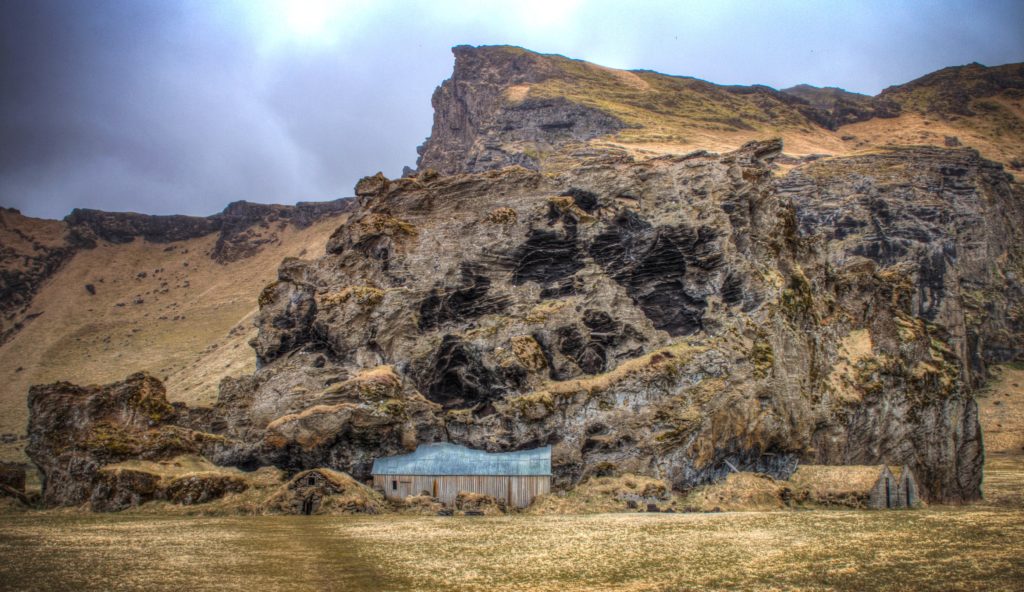 These particular buildings, and this particular rock, are apparently steeped in Icelandic folklore, with tales of elves and all manner of mysterious happenings having occurred here. If you want to read more about the elves and their shenanigans at Drangshlíð House / Rock, check out this post from the Guide to Iceland.
These particular buildings, and this particular rock, are apparently steeped in Icelandic folklore, with tales of elves and all manner of mysterious happenings having occurred here. If you want to read more about the elves and their shenanigans at Drangshlíð House / Rock, check out this post from the Guide to Iceland.
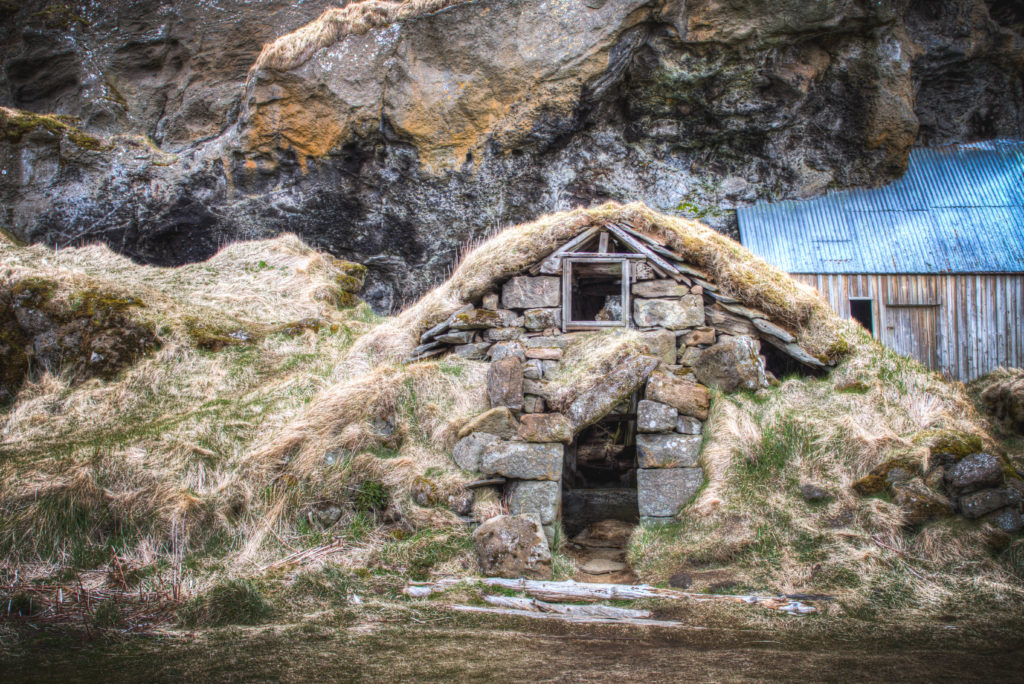
Bidding the elves adieu, we continued west to Reykjavik. The rain let up a bit, making for a much easier ride, and before we knew it we were on the outskirts of the city.
Reykjavik is a larger city than I thought it would it be. The population is a shade over 123,000, but it feels like a city twice that size when navigating towards the inner core. We were hitting it in early afternoon, and traffic was steady. Of course, having spent the last few days driving around in the middle of nowhere – comparatively speaking – maybe the traffic felt heavier than it was.
We parked in the city centre and hiked up a steep hill to find one of Reykjavik’s most iconic landmarks, Hallgrímskirkja Lutheran Church. Hallgrímskirkja is a big, imposing structure overlooking the city and the hills and ocean in the distance. I didn’t love it when I first saw it, but it grew on me.
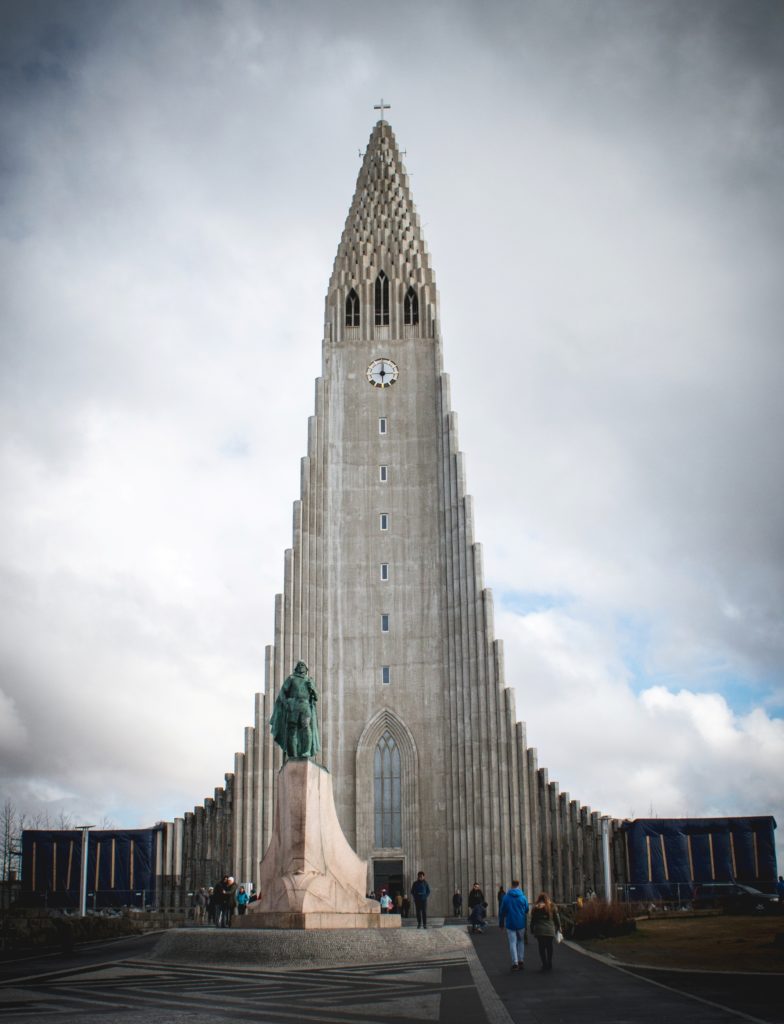
You can go up to the top for 900 ISK (about $12 CAD / $9 USD), a bit steep, but everything in Iceland is expensive. The views are pretty good, and it helps to put the city in perspective. I had heard Reykjavik has a couple of excellent hot dog stands, so I was scoping out the town, looking for tasty, delicious food truck hot dogs. Obviously, we were getting hungry, but we were also tight on time.
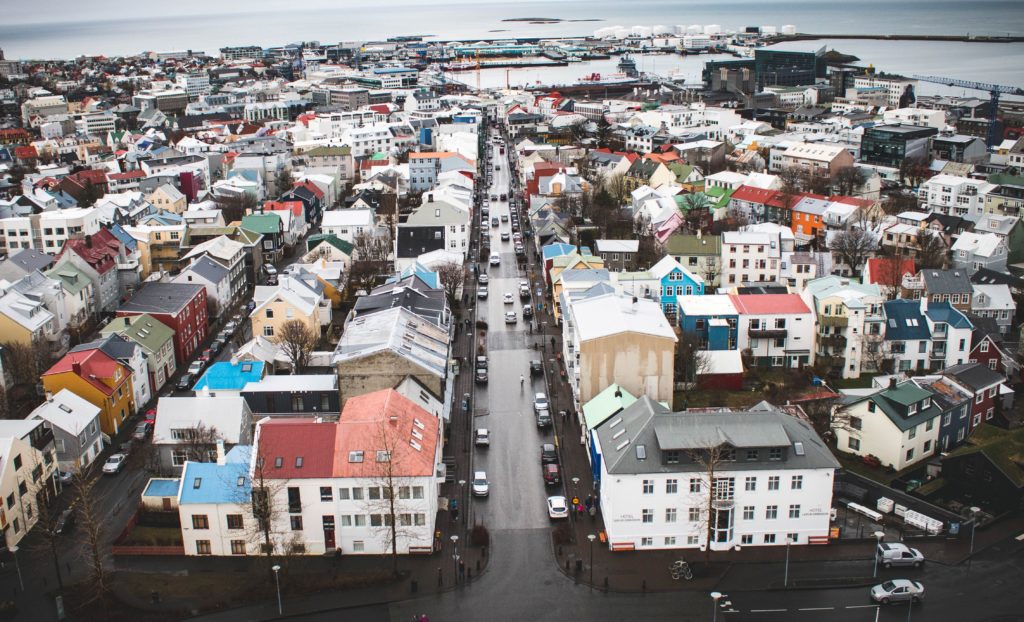
We wandered through the church and then went exploring the city for a while. Buildings and houses are painted in blues and muted yellows, pastel colours the norm. There’s plenty of public art and well orchestrated graffiti, which brings a bit of a funky vibe to the downtown core. I liked it.
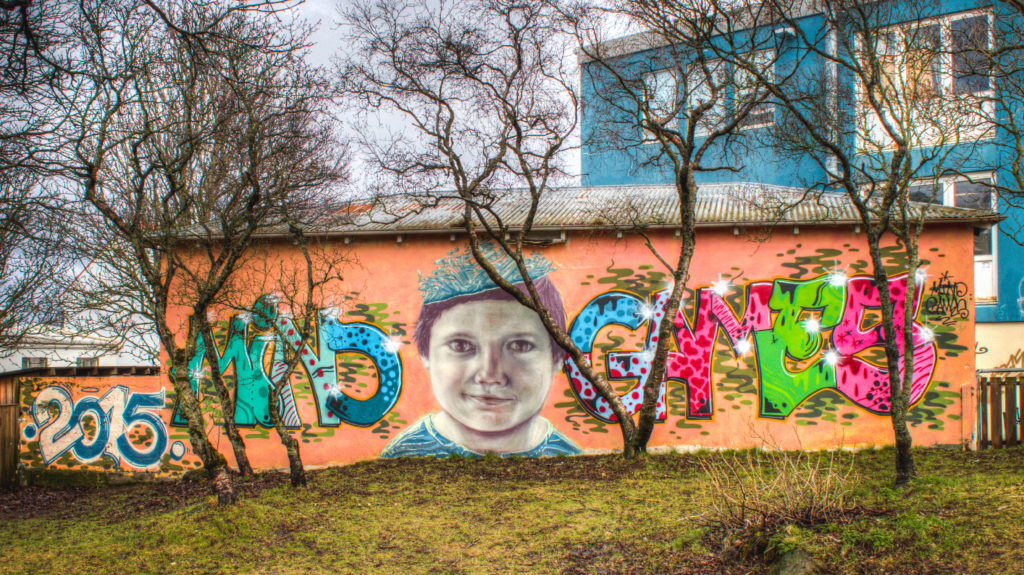
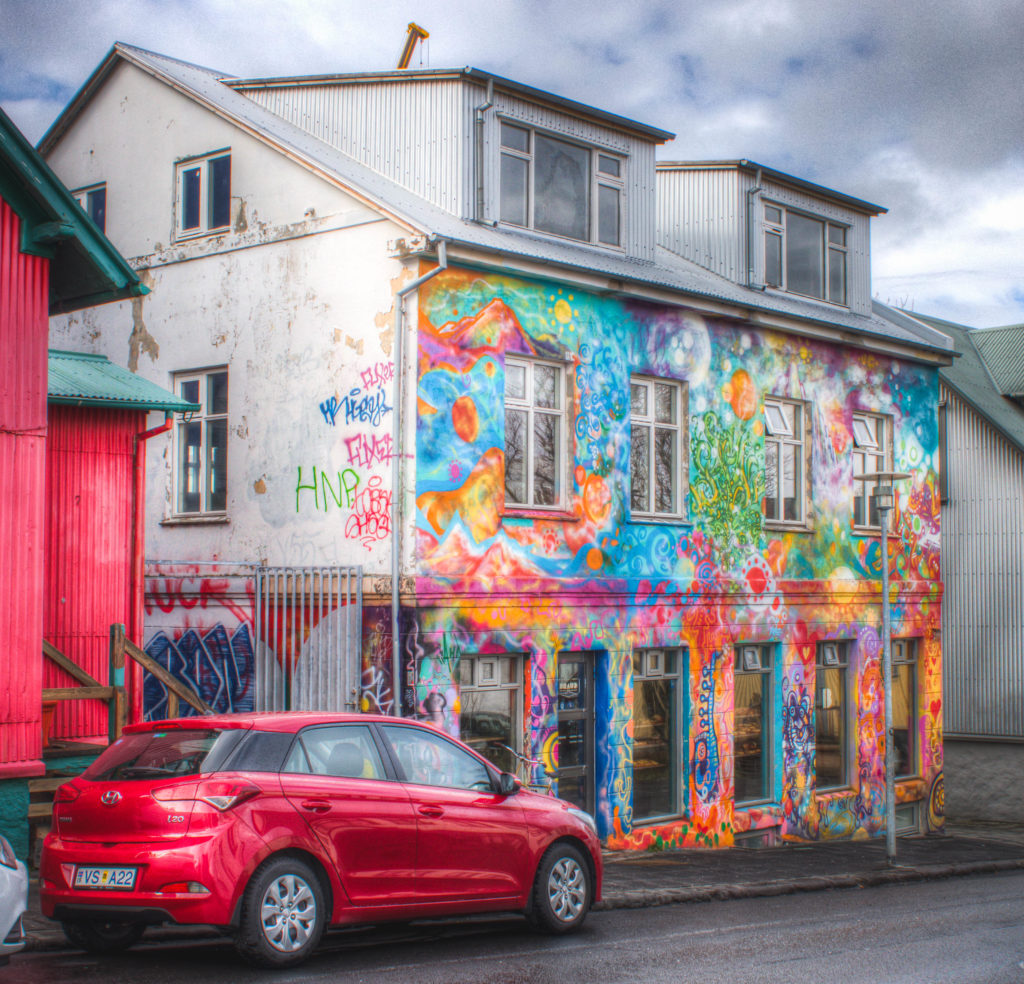 We checked out a few shops and wandered a bit, but sadly time wasn’t on our side. I would have enjoyed exploring Reykjavik a bit more, but we hadn’t come to Iceland for the city; we were there for the geysers, the waterfalls, glaciers, and ocean. We loved the terrain, the adventure, exploring the outdoors, and meeting the locals. We will be back.
We checked out a few shops and wandered a bit, but sadly time wasn’t on our side. I would have enjoyed exploring Reykjavik a bit more, but we hadn’t come to Iceland for the city; we were there for the geysers, the waterfalls, glaciers, and ocean. We loved the terrain, the adventure, exploring the outdoors, and meeting the locals. We will be back.
Angela and I jumped into the Polo for our ride out to Keflavik, and our final Air BnB stay of the trip. Early the next morning we were off to France, ready for new adventures, memories of drifting ice running over and over through our heads.
How about you? What did you think of the glacier lagoon or Reykjavik? Please leave comments below – I always love to hear from you! Cheers!

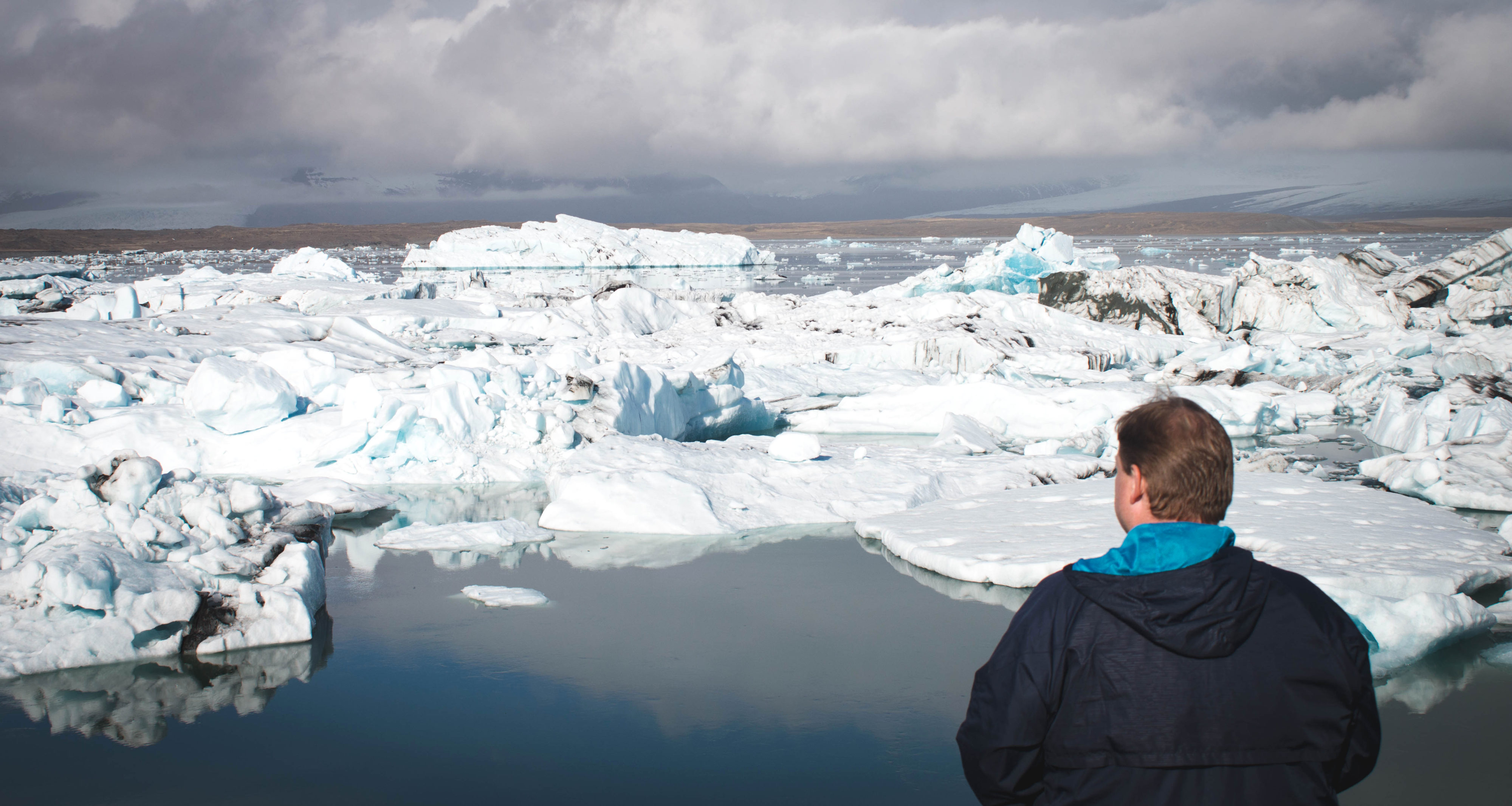
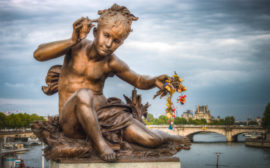
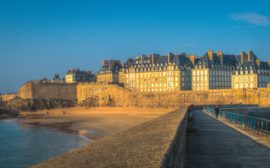
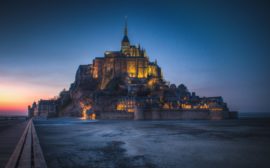
Great website and beautiful photos! What camera do you use? Can’t wait to see your France trip report 🙂 Say hi to Angela!
Thank you so much, Mary! I use a Canon 70D with a variety of lenses – I love that camera, it’s so versatile. We’re really looking forward to France – it’s a place we definitely enjoy. My pleasure to say hi to Angela – thanks!